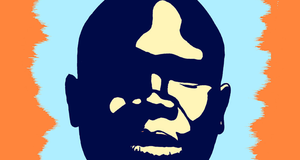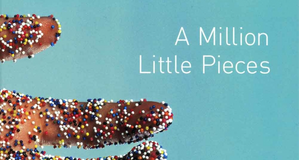Spiritual Autobiography and Dave Eggers' "What is the What"Christianity also has similar roots and ancient tales of man being tested by God. In the Christian Creation story, Adam and Eve are tested by God to not eat the forbidden fruit (New International Version, Genesis 2:4). Also, in Genesis 22, Abraham is challenged to kill his only son, Isaac, on God’s command. However, unlike these Judeo-Christian stories, the tale of the What reveals a test for gratefulness and appreciation for what God has provided, not a test to follow God’s authority. These differences can clearly be seen when comparing the high level of piety in traditional spiritual autobiographies with the more subtle recognition towards God in Eggers’ novel. This fusion of Christian and Dinka beliefs allows Valentino to provide a unique interpretation of his experiences that many other spiritual autobiographers are unable to offer. Writing a memoir, like writing a spiritual autobiography, can strengthen the author's experience of clarity in their life, their relationship with God, and their interactions with others. Many of Valentino’s reflections and cries to God in the novel come at moments of deep meaning and essentially highlight the messages he wants to convey by strengthening the clarity of the reader. In Memoirs of the Soul, a guide on how to write one’s own spiritual autobiography, Nan Phifer emphasizes the importance of discussing disappointments in life.Writing about one’s struggles and reflecting upon them is essential to the journey of spiritual autobiography into light and understanding and away from unperceptive and misguided darkness. The speaker’s reflections on calamitous events and moments of extreme distress reveal the strengths, weaknesses, regrets, and good intentions that can only be known through spiritual autobiography (Phifer, 2002). This enables both writing and reading spiritual autobiographies to create a more intimate experience where the reader feels entrusted with the speaker’s difficult and personal past. These very intimate moments are effectively incorporated into What is the What through Valentino’s occasional cries and supplication to God in moments of dire need. While fleeing his burning village, Valentino runs and prays, asking God to protect him and his family and questioning God for his predicament. He inquires and pleas, “Oh God of the soul, why are you doing this? I have done nothing to ask for this. I’m a boy. I’m a boy. Would you send this to a lamb? You have no right” (Eggers, 2006). This questioning technique would be very foreign to Augustine and Mary Rowlandson, who would never think to write that God has “no right” to do something and always defer their situations to what must be best in the eyes of God. On the contrary, this technique clearly displays Valentino’s desperateness and better enables modern readers to understand and envision circumstances that many have never experienced than the meek and supplicating techniques found in traditional spiritual writings. This personal prayer also reflects customary religious imagery as Valentino compares himself to a lamb, which is traditionally depicted as protected by Christ, the Good Shepherd. Valentino’s bold claim that God is not properly fulfilling his role grants his tale of suffering a new authority that is rooted in religious faith and is remarkable for its inability to be effectively resolved. Through its presentation of unresolved problems, What is the What alters the traditional narrative pattern of spiritual autobiography. In the article titled “Circuitous Journeys: Modern Spiritual Autobiography,” David Leigh describes the new narrative patterns found in more modern spiritual autobiographies. His definition of the modern spiritual autobiography includes the following four traits: religious alienation, autonomy (individual), appropriation of faces (creating a self), and inauthenticity (forces of society). Leigh explains how the modern world forms these traits and creates a new style of spiritual autobiography: While some of these patterns are vaguely reminiscent of those in Saint Augustine’s Confessions, most are different. Most noticeable, of course, is that the context or world of these modern stories is radically other. Their search for ultimate meaning takes place in a world marked by four traits not found in traditional societies. The presence of these four traits…frames the narrative form and symbolic patterns of the modern religious autobiographer (Leigh, 2000, p. 927). What is the What reflects many of these traits and consequently, can be termed a modern spiritual autobiography. Not only does Valentino feel alienated and forgotten by God, but he also is forced to act solely as an independent individual from a very early age, as he tells his love Tabitha, “God is in my life but I do not depend on him. My God is not a reliable God” (Eggers, 2006, p. 331). The Valentino that is telling his story has developed from the young Valentino who struggled in Sudan and was frequently a victim of the tumultuous forces around him. Leigh refers to the “autonomous speaker” to describe the narrator in spiritual autobiographies, which is a very fitting title for Valentino who take an active role in his own life, despite lacking so much control over his daily survival. Interestingly, Leigh also argues that novel is a form of “disguised autobiography,” which is very fitting for What is the What and its position as an autobiographical novel (2000). When one writes a novel, he or she is bound to incorporate multiple aspects of him or herself in the story, regardless of its topic. Eggers is very open to this idea in his novel as it contains aspects of the true Valentino, the accounts of various others who survived the Sudanese Civil War, and of course, Eggers himself. Eggers is not new to writing autobiographical texts as he published his own memoir, A Heartbreaking Work of Staggering Genius, in 2000. Much like What is the What, Eggers’ memoir has been labeled, “an autobiographical narrative about unbearable suffering, and a book of psychoanalytic commentary on the challenges of writing a memoir about catastrophic loss and trauma” (Miller, 2011, p. 983). Coming from the minds of both Eggers and Deng, What is the What is uniquely able to elucidate different meanings in the lives of the approximately two and a half million people who suffered and died during the civil war in Sudan. Together, they are able to provide a thought-provoking account with both situational significance and global implications. The voice created through this combination of author and survivor communicates the lessons learned from these horrors more effectively than either could alone. Through his reflections, Valentino demonstrates a developing wisdom that is certainly to be admired by readers. As more is revealed about the horrors of his past, Valentino essentially becomes a role model for how to live, an aim echoed in the spiritual autobiographies of Rowlandson and Augustine. Hagiography, or the writing of the lives of saints, certainly has a role in both What is the What and these traditional works. However, the typical Christian vernacular of miracles and grace is frequently missing in this example of modern spiritual autobiography. Instead, Valentino’s endurance and patient suffering ordains him in the light of the saints. This presentation is very typical of spiritual autobiographies as they “do not always aim to describe exemplary conduct and, if only because of Christian humility, neglect the good deeds and signs of holiness which are the staple of hagiography to talk, not of miracles but of miracles received, of grace offered but often refused” (Bowman, 1976). Valentino makes no claims to any heroic actions, but his peaceful and humble behavior in times of great distress exemplifies his holiness and apparent destiny for something greater.Continued on Next Page » Suggested Reading from Inquiries Journal
Inquiries Journal provides undergraduate and graduate students around the world a platform for the wide dissemination of academic work over a range of core disciplines. Representing the work of students from hundreds of institutions around the globe, Inquiries Journal's large database of academic articles is completely free. Learn more | Blog | Submit Latest in Literature |


















